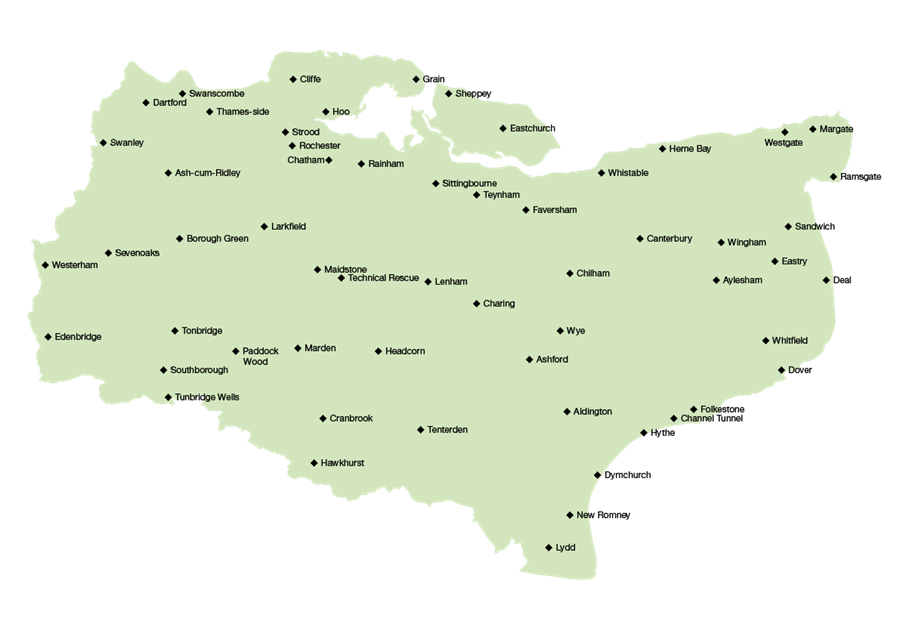Our assets
Kent and Medway Fire and Rescue Authority owns a wide range of assets, from buildings, to fire engines, response cars, motorbikes and boats.
The map on this page shows the location of operational fire stations in Kent and Medway and our headquarters is in Maidstone.
Please note that Kent Fire and Rescue Service moves vehicles, equipment and staff around the county on a regular basis in response to risk and other factors, meaning that not all stations are occupied all the time.
View or download the station list - Excel | CSV | PDF

Property assets
We have published a register of all property and land currently owned by the authority. These are predominantly active fire stations which do not have street numbers. If any housing owned by the authority is put forward for disposal, it will also be published in this register, however street numbers will not be published as this potentially highlights where property is vacant.
Vehicles and equipment
Our vehicles
Fire engines
KFRS currently has front line fire engines based at locations across Kent and Medway. It also has a number of reserve fire engines, some of which it is planned to dispose of as they reach the end of their operational life. KFRS will sometimes donate these to charities for use overseas.
Response cars
KFRS has a number of response cars, some with an all-wheel drive capability. They are all equipped with blue lights and sirens. These vehicles are for fire officers and incident commanders of more complex incidents to move quickly about the county. All response cars are speed limited to 70mph unless on an emergency call.
Pool cars
The role of KFRS pool cars is to move staff around between fire stations for meetings, training and to move firefighters to cover sickness at other stations. They are not used for emergency response and do not have blue lights or sirens.
High Volume Pump (HVP)
The HVP can be used to pump high volumes of water for fire fighting or can be used to move large quantities of water away from an area such as in flood situations.
The HVP is capable of delivering up to 8,000 litres of water per minute.
Water Management Unit (WMU)
The WMU is a specialist unit that can be used in conjunction with the HVP for getting water to scenes of incidents where either the water is scarce or water pressure is low. The WMU is able to operate as a hose layer with the capability of laying 1km of large diameter hose and is fitted with a hydraulic hose retrieval system.
Water Rescue Units
Each water rescue unit is equipped with a boat, two inflatable mud walkways, life jackets, throw lines, dry suits and first aid kits. These units are ready to deal with every eventuality from a driver trapped in a car on a flooded road to assisting the coastguard on incidents such as mud, cliff and coastal rescues.
Detection Identification Monitoring (DIM) Vehicles
A DIM vehicle is an incident response unit equipped to:
- detect of a range of chemical or radiological hazardous substances
- identify hazardous substances of chemical, biological or radiological nature
- monitor levels of contamination to establish and maintain cordons.